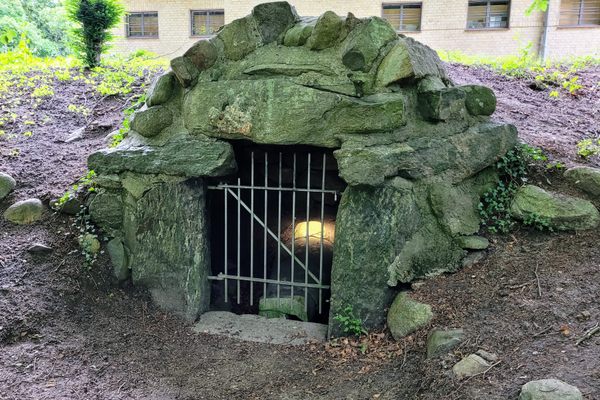AO Edited
The Bog Bodies at the Schleswig-Holstein Landesmuseum
Ample proof that watery ends make for well-preserved, millenia-old mummies.
Thousands of years ago, unfortunate souls met unusually grisly deaths in peat-drenched bogs, often condemned for some unknown sins or used as sacrifices. These bodies’ gruesome ends kept them uniquely well-preserved: scientists can determine diet, method of death, age, and even hair color of these so-called “bog bodies”.
The Landesmuseum in Schleswig-Holstein, Germany has five of these bodies and one bodiless head in its permanent collection. Some of the museum’s holdings include the following bodies:
Windeby I and II. In 1952, near the museum itself, workers cutting peat to sell for fuel found two well-preserved bodies. The first was a young male, nearly-intact, who died around the 1st century A.D. Despite speculations that he was murdered, later scholars decided it was more likely that he died of malnutrition or illness. The “blindfold” around his eyes were probably used to cover his eyes after death, not as some sort of pirate-esque plank walking. The second body, dubbed Windeby II, had been strangled with a hazel branch, dumped into the bog, and held in the watery depths with sharpened branches.
Damendorf Man. Probably sacrificed around 300 B.C., the Damendorf Man was flattened by the weight of the peat. Unlike the other bodies which are mostly intact, only this body’s skin, nails, and hair, as well as his leather belt and shoes, were found.
The head from Osterby. This severed head was discovered wrapped in a cape of deerskin. The hair on the head was still intact, tied in a Swabian knot, and discolored red from thousands of years in the bog. Scientists hypothesize that the head alone was used as a sacrifice. The head was believed to be the seat of the human soul to the Iron Age, Celtic, and Germanic peoples.
Dätgen Man. This body belonged to a 30-year-old man who was stabbed and decapitated before being dumped in the bog. The body itself was staked down in the peat, and the severed head was found about ten feet from it. The stake may indicate that this body was not sacrificial like most bog bodies were, but rather that people thought this man might become a wiedergänger, or zombie, after his death.





















Follow us on Twitter to get the latest on the world's hidden wonders.
Like us on Facebook to get the latest on the world's hidden wonders.
Follow us on Twitter Like us on Facebook